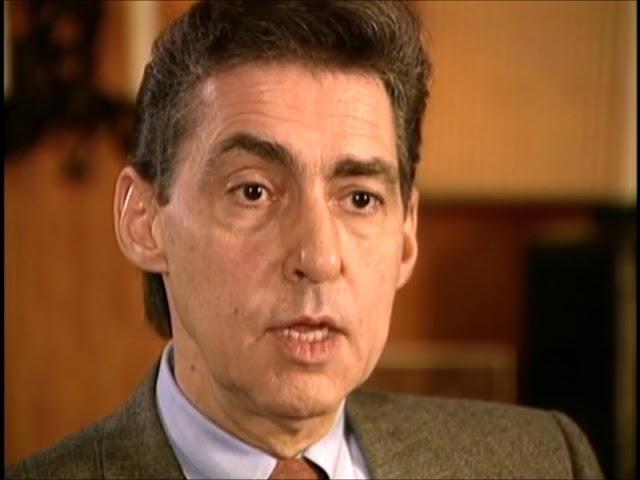
Basic Principles in Piano Playing as Taught by Josef & Rosina Lhévinne, Explained by John Browning
Комментарии:

Unfortunately, a lot of the advice presented in this video is counterproductive or doesn't help in any way. The stretching exercises for example, have been shown to do nothing. Moving your fingers around doesn't do anything to the tendons or muscle except strech them. Same with the way they emphasize playing octaves. The problem is that they practice by isolating each finger, which means that you have to rely on the natural strength of the individual fingers instead of the entire arm. The pinky, for example, is deemed to be a weak finger, but this is not the case. If you see the fingers as extensions of the arm and simply press down or rotate down into the pinky, then it has the same strength as the rest of the fingers provided you use the whole arm. But, since they isolate the fingers, the pinky is weak, and so the need to stretch the 4th finger to help with octaves.
Ответить
A lot of nonsense...there was not A Russian school.rather....several directions....the ear and idea :produces the sound....😢😊
Ответить
Soooo valuable.
Ответить
John Browning's version of Chopin's Etudes are still the greatest I've ever heard. Incredible pianist.
Ответить
I really need that warm up exercise sheet and the fingering number
Ответить
What a wonderful document!
Ответить
Josef was AMAZING! Rosina … eh, not so much.
Ответить
Fingers do not produce tone, pianos do.
Ответить
Fantastic!
Ответить
who better than to make available these valuable "principles" handed down to him by the Master teacher Rosina Lhevinne....I've enjoyed Mr. Browning's beautiful playing for years.
Ответить
Oh my god!! This performance of the Chopin is beyond wonderful. I don't know what else to say.
Ответить
The sound is not the major problem, which is how to push (weight) the fingers on the keyboard in order, combined with articulation, to be able to play. This can be done through a horizontal move of the metacarp, the articulation where the fingers are plugged into the hand. It is for sure wrong is to consider that all moves should be intended to be vertical, to hit the keyboard in all possible manner from above. I think that there are some shuffle moves that are conveyed to the piano by this metacarp articulation, moving it in order to put fingers in a narrow position to their keys. Anyway this is the only thing i didn't tested, and i tested many thing. Don't think it's just sound and immersion in music.
Ответить
It is true that, "If the passage work was even, then it sounded faster than it was." Bernstein told, In this case, the strings this same thing when we were playing the last movement of the Bartok, Concerto For Orchestra. He demanded that we play it slower, to win greater evenness and precision, to excite greater emotional export. He was of course correct, and it sounded not only faster at that slower speed, but more...savage too!
I wonder then why it has come to pass that so many pianists play Chopin so quickly, simply because they can (fearing criticism for failing at metronomic speed, but without regard for musical effect or intent), reducing his music to that which Chopin reviled most: virtuosity for virtuosity's sake. The implication is that not only will the emotional affect be more effectively communicated at a slower tempo, but that the listeners ear would have greater opportunity to celebrate Chopin's largely unaccounted (by listeners) harmonic ingenuity and contrapuntal genius.
These elements of Chopin's works go largely unaccounted by non-pianist whose association with a piece has not come of personally consuming, digesting and metabolizing its individual elements, note for note, before then excreting them in performance. The slower tempo would make space in the landscape or canopy of the performance to allow light of awareness to make and accounting of them.
This is why Schumann said of Chopin, that his music is as "Cannons buried in flowers", meaning music of far greater import and consequence is hiding behind beautiful melodies. Those musical cannon's need to be more in evidence of performance, and that can only happen if the performer becomes less convicted to demonstrating 'mastery' of Chopin's music, when he is really securing its 'defeat'.
As Liszt wittily observed, "Chopin cannot play so fast, he only seems to".

Most of these examples and advise is completely opposite of Arrau’s way of playing the piano where the body is truly relaxed and one plays with natural weight evenes clarity colors and textures at the desired speed
Ответить
💘❤
Ответить
I wish I could double like this. Thank you for posting these. 🙏🏻 The practice away from piano does seem almost impossible to me. I’ve never heard it explained as he did in this video. Much clearer now on that.
Ответить
Someone once pointed out that a piano, a percussion instrument, cannot be made to sound "different" using a flat or rounded finger. Velocity (volume) is the only characteristic that can be pulled out of a piano not,e as well as potentially intricate pedaling and ties.
Ответить
Thank you for this wonderful video!
Ответить
Probably, the crucial aspect of mental practice is the aural image. Always the sound.
Ответить
Какое счастье, что мы можем слышать такую прекрасную игру.Игра дома на собственном инструменте это совершенно уникальное явление.
Ответить
To lose one is a tragedy, God please give us more so we never lose our love of classical piano
Ответить
Was taught by a student of Joseph Fidelman. . .completely different technique.
Ответить
Simply wonderful!
Ответить
sensational Chopin!congrats
Ответить
Great video and nocturne performance is amazing !
Ответить
His sound is wonderful - no surprise: Lhevinne's was incredible: listen to his astonishing recording of the Schulz-Evler blue danube transcription. Re flat fingers: if one's fingers are too thick to play in between the black notes it's very difficult to play this way, also, having long thumbs makes this far easier. If one reads Josef Hofmann's book on piano playing there is a photo showing the hand position favoured by Hofmann - and the fingers are anything but flat - and Hofmann was arguably one of the greatest technicians when he was at his peak.
Ответить
I wish I had him as a teacher. Came to virtually the same technical and routine but it took me 50 years. Thank you
Ответить
Thank you so much for this upload! Not only precious teaching, but also I heard some of my favorite pieces, Mendelssohn's Sweet Remembrance and several of Chopin's nocturnes.
Ответить
Beautiful playing.
Ответить
Thank you for posting! 😌❤️👍
Ответить
Magnifique leçon de maître. Trésor.
Ответить
Gesticulation ? Liszt didn´t have this problem. He was a master of gesticulation, movement, facial expressions, as described by his pupils and numerous biographies.. This is all relative !
Ответить
Thank you for sharing this treasure!
Ответить
So beautiful!
Ответить
Note that different fingerings of the major scale in sixths are given in the Plaidy exercise book. On page 61 of the Schirmer edition of the Plaidy exercises, two fingerings are given (the "preliminary exercises"), while on page 62 (the "major scales" proper) a third fingering is given that John Browning appears to be using in the video (which I have watched at slow motion - quarter speed!):
Right hand: 1-4 (starting on E and C) 2-5 1-3 1-4 2-5 1-4 2-5 1-4 2-5 1-3 1-4 2-5 1-4 2-5 1-4 (E and C, the top of the scale), and then descending from there (2-5 on D and B, etc. all the way down to 1-4 again on E and C at the bottom of the scale).
Left hand: 5-2 (starting on E and C) 4-1 3-1 5-2 4-1 5-2 4-1 5-2 4-1 3-1 5-2 4-1 5-2 4-1 5-2 (E and C, the top of the scale), and then descending from there (4-1 on D and B, etc. all the way down to 5-2 again on E and C at the bottom of the scale).
That is for C major, and I assume the same fingering is to be used in the other keys.

What a great musician. His Samuel Barber recording is sublime. I hadn't heard him play Chopin........absolutely magnificent.
Ответить
Interesting; he was a friend of my piano teacher and I visited with him at a concert that was unfortunately at the same night as the moon landing. He was very unhappy he had a concert to play and could not watch (before VCR...)
Ответить
The "Cathedral" concept - a fantastic tip, however, it won't make much sense if you're unaware of arm weight, rotation, and maybe a couple other concepts. I finally "got it" watching it this time. It never "sunk in" after previous watchings of this video - a few times over the past couple years.
Ответить
So when are we going to talk about guns?
Ответить
I am sure your students appreciate your reverence for your former teacher and will also hold you in a place of honor. At 78 I still practice and yes, need to look at the music and visualize the eventual playing. Thanks and Bravo!
Ответить
As far as envisioning a memorized piece, a person told me the story of how they attended a driving school where Emerson Fittipaldi showed up and gave a "real time" verbal description of driving the course they were at. When he started, they started a stop watch. When he finished describing the lap they stopped the watch. His description took exactly as long as his lap time on that course. Of course Emerson took this to a higher level than merely reciting each curve's handling.
Ответить
some priceless insights by a keyboard giant.
Ответить
That was gorgeous plaring of the Chopin Nocturne. So beautiful.🥀
Ответить
beautiful playing
Ответить
I saw John Browning playing Beethoven piano concerto 3 w/ the South Bend Symphony Orchestra in S.Bend, IN in the 1970s.
Ответить
Brilliant upload
Ответить

























